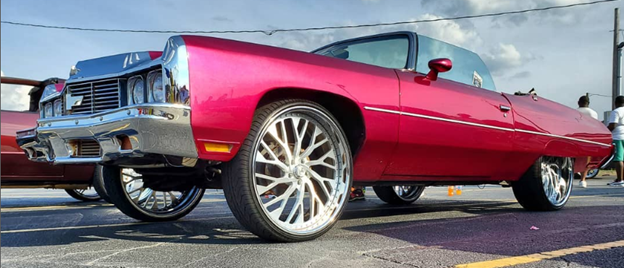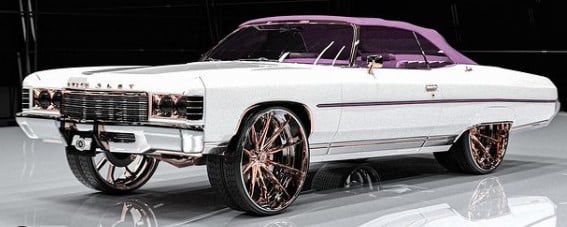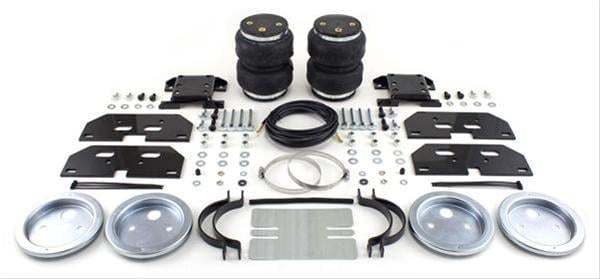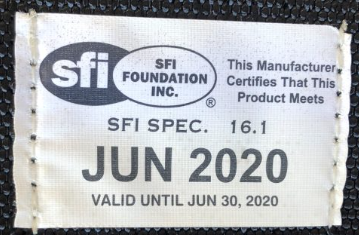Whether racing on dirt or asphalt, the steering system is one of the most important components on your vehicle. Every turn involves precise movement from the steering wheel to the tires. To help you get through each corner, a rack and pinion setup is used. Lightweight and compact, rack and pinions are the mainstay for both Asphalt and Dirt Late Model vehicles. In addition, power steering is very popular as it reduces the force required to keep your racecar where you want it through the turns. Assisted-steering reduces driver fatigue, giving you the extra stamina and helping to put you in the winner's circle. Read on to learn more about how rack and pinions play a big part in circle track racing.
What is a Rack?
In circle track racing, a steering rack is a fundamental component that converts the rotational motion of the steering wheel into linear motion. This linear movement directs the wheels, allowing precise control of the vehicle's direction during high-speed maneuvers on asphalt or dirt tracks.
What is a Pinion?
The pinion is an essential part of the rack and pinion steering system. It meshes with the rack, translating the rotational force from the steering wheel into lateral movement, influencing the direction of the wheels.
What Are the Two Types of Rack and Pinion Steering Systems?
Power Steering Rack and Pinion:
Most circle track vehicles, especially Dirt Late Model and Asphalt cars, utilize power steering rack and pinion setups. These systems, featuring rack and pinion units manufactured by companies like Appleton, Coleman, Sweet Mfg., and Woodward, significantly reduce the effort required to steer, particularly advantageous during high-speed maneuvers.
Types of Steering Racks:
There are two primary types of rack and pinion units prevalent in circle track racing:
- Remote-Mounted Servo: Positioned either at the steering wheel end or midway along the steering shaft, these setups incorporate a separate steering servo.
- Integrated Servo: These units have the servo as an integral part of the rack and pinion, slightly larger but requiring fewer hookup lines.
How Much Does it Cost to Replace A Circle Track Rack & Pinion Steering?
Replacement costs for circle track rack and pinion steering systems vary based on the type, brand, and additional components needed for installation. Generally, expenses can range from a few hundred to over a thousand dollars, considering the specific requirements of the racing class and track conditions.
Signs & Symptoms of Failing Circle Track Rack & Pinion Steering
Identifying potential issues with the rack and pinion steering system is crucial for safety and performance. Warning signs of potential failure include excessive play in the steering wheel, erratic steering response, or unusual noises during turns. Regular inspections and maintenance are vital to prevent catastrophic failures during races.
Racing Classes: Asphalt & Dirt Late Model
Most Late Model and Dirt Late Model cars use special racing style rack & pinions (R&P) with power steering. These rack & pinion units are made by Appleton, Coleman, Sweet Mfg., and Woodward.

There are two types of rack & pinion units. Some setups have the steering servo remote mounted at the steering wheel end of the steering shaft or midway between the steering wheel and the rack & pinion. Some have an integrated servo that is part of the rack & pinion unit. The integrated servo style R&P is a little larger with the servo mounted on it, but requires fewer lines to hook up since two of the lines are already hooked up between the servo and rack.
These steering racks are measured in inches of travel for each turn of the steering wheel. This method is used since the steering ratio cannot be calculated by testing the steering rack & pinion all by itself. The steering ratio must be measured on a vehicle and changes based on other steering components besides the R&P (i.e. steering arm length, Ackerman steering, etc.).
Racers generally want a quicker steering ratio on short tracks and slower steering on longer tracks. Dirt track racers usually want a very fast ratio for most short tracks (3" to 4" per turn). Asphalt racers also want a fast ratio, but not quite as fast (2" to 2-1/2" at most short tracks).
The steering servos are available in several sizes that range from .185 to .300. The lower numbers take the least amount of steering effort, and effort gets higher as the numbers go up. Changes in the servo change the feel of the steering, and .220 to .250 are the most popular sizes.
These steering racks are for use with front steer setups where the steering arm is on the front of the spindle. The R&P units use a 3-bolt mounting pattern and all use the same bolt pattern.

The rack and pinion bracket is normally welded to the front cross-member of the chassis that goes under the front of the engine. Billet Shims are often used between the R&P and the mounting bracket to make adjustments which will help eliminate bump steer. These shims are available in several thicknesses.
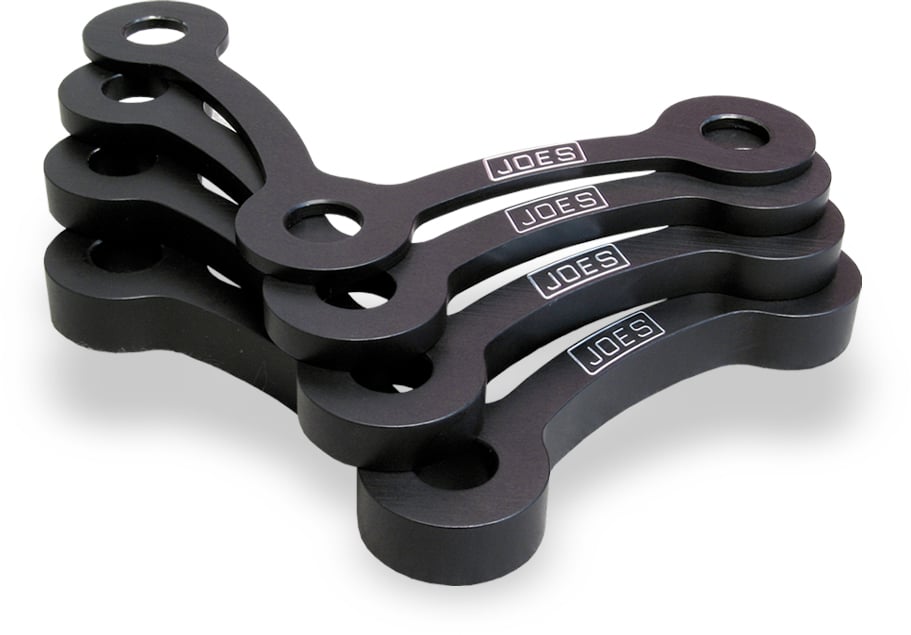
Many racers use KRC power steering pumps which have a unique feature that allows tuning of the steering system by changing the flow valve to fine tune the feel and assist in the power steering system.
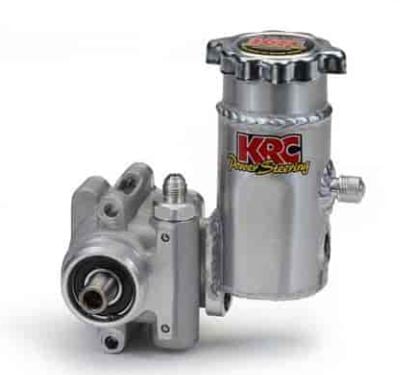


For safety reasons, it is recommended that you use a collapsible steering column. You should also add a shaft collar on the steering shaft to limit upward movement toward the driver (mount it near one of the rod-end style steering shaft supports).
